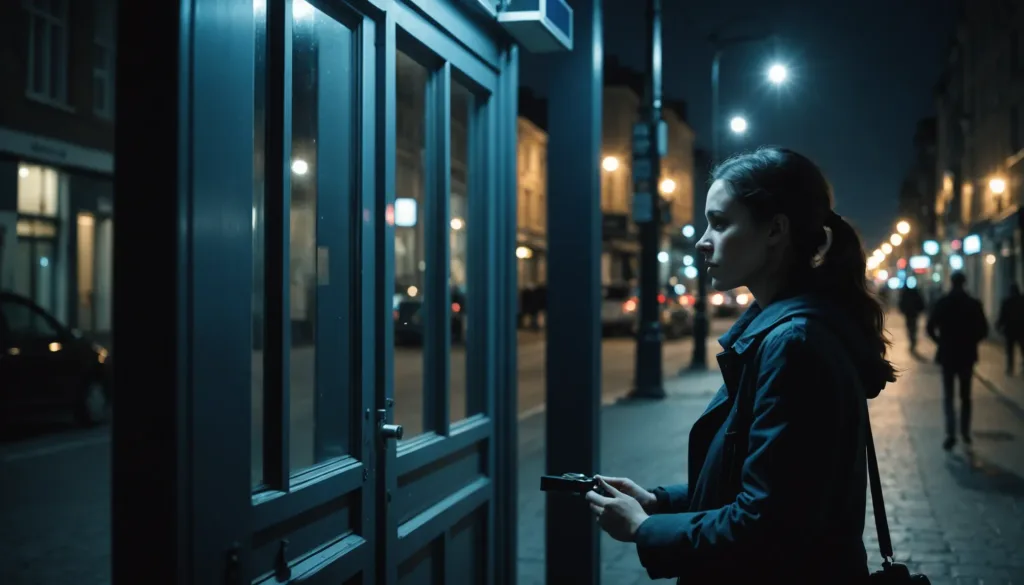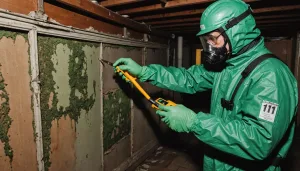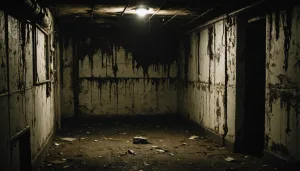Experiencing a lockout can be a stressful situation. However, the first and most crucial step is to clearly understand your lockout scenario. Assessing the situation accurately is essential as it dictates the next steps you will take to re-enter your home or vehicle safely and efficiently. Whether your key is lost, broken, or inside the locked premises, evaluating the problem allows for a more streamlined decision-making process.
Start by determining the type of lock involved. Common locks include deadbolts, knob locks, smart locks, and padlocks. Each has its own method of operation and potential weaknesses that may be exploited during a lockout. For instance, a deadbolt may require entirely different tools and techniques compared to a basic knob lock. The table below illustrates the differences.
| Lock Type | Complexity to Unlock | Typical Tools Needed |
| Deadbolt | High | Bump key, drill |
| Knob Lock | Medium | Lock pick set, credit card |
| Smart Lock | Variable | Smartphone, smart home access |
| Padlock | Low to Medium | Lock pick set, bolt cutter |
Once you have pinpointed the type of lock, think about how you became locked out in the first place. Was the key misplaced or stolen? Was the lock or key mechanism damaged? Did you simply walk out without remembering the keys? Understanding these nuances can guide your approach, whether it’s reaching out to a locksmith or implementing a DIY solution. In cases of potential theft or keys falling into the wrong hands, enhancing your home security should be an immediate consideration.
Next, evaluate your surroundings. This part of the process involves identifying any potential safety risks or security breaches. Determine whether you’re in a safe area, particularly if the lockout happens at night or in an unfamiliar place. Your safety is paramount, and an emergency guide can offer valuable information on precautions to take if you feel threatened while locked out.
Consider any local resources available to you. Nearby friends, family members, or neighbors can be invaluable during a lockout, especially if they have spare keys. Additionally, many cities and neighborhoods are served by emergency locksmith services that prioritize timely service delivery to residents in need. Calling these professionals can save time and prevent lock damage, making the re-entry process smoother.
Assessing alternative entry points
In a lockout situation, exploring alternative entry points can be a practical solution before contacting a professional locksmith. Here’s a step-by-step guide to assist you in identifying potential ways to regain entry without causing damage or compromising home security.
- Check for Open Windows: Carefully walk around the exterior of your home and inspect each window. Sometimes, windows might have been accidentally left slightly open or unlocked. If you find one, ensure it’s safe and practical to use. Be cautious to avoid breaking or damaging the window, and make sure it’s secure enough to support your entry. Additionally, consider the height and accessibility; using a ladder or step stool might be necessary but should be done with care.
- Test Other Doors: Often homeowners may fortify the front door, but secondary entryways such as back doors, side doors, or garage doors can be more vulnerable. Verify if any of these doors might inadvertently be unlocked. While doing so, look out for any potential security risks like broken locks or hinges needing attention in the future. Always remember that keeping secondary doors secure is crucial for overall home security.
- Check the Garage: If your home has an attached garage, it might provide an entryway. Even if the main garage door is locked, an interior door from the garage to the house may have been left unlocked. Familiarize yourself with the garage mechanisms; often, these can be disengaged with a simple pull cord, but exercise caution to avoid damaging the system.
- Look for Spare Keys: Whether strategically hidden around the exterior or entrusted to a neighbor, spare keys can offer swift access. Familiarize yourself or confirm with household members if there’s a known spot where a key might be located, such as under a rock, in a plant pot, or in a fake sprinkler head. Fetching a spare key from a neighbor, friend, or family member can be one of the least intrusive measures.
- Evaluate Safe Entry Points: Consider entry points that can be accessed with minimal risk of personal injury or property damage. This decision should incorporate factors like the height of entry, the structural integrity of access points, and weather conditions. Make logical choices; avoid drastic measures that might lead to accidents or escalating the need for an emergency guide to address injuries or damages inflicted during hasty re-entry attempts.
Assessing alternative entry points requires a balance between creative problem-solving and maintaining the integrity and security of your home. While these steps can sometimes help regain access, remember that employing a professional locksmith might eventually be necessary for a safe and efficient solution, especially if no obvious entry points are available.
Calling a professional locksmith
When you find yourself locked out and alternative entry points aren’t available or safe, reaching out to a professional locksmith becomes the most viable option. These experts are equipped with the necessary knowledge, skills, and tools to resolve your lockout efficiently and without causing additional damage to your property. Hiring a locksmith can ultimately save you time and stress, allowing you to regain entry swiftly and with minimal hassle.
Professional locksmiths come with the advantage of being highly experienced in dealing with a wide variety of lock types—be it traditional deadbolts, modern smart locks, or specialized high-security systems. Their expertise ensures that they can unlock doors without damaging the locks, preserving your home security for future use. This is particularly important if you have a more complex locking mechanism that could be compromised by improper manipulation.
Additionally, locksmiths provide a convenient emergency guide, meaning they offer prompt services irrespective of the time or day. Many locksmith companies operate round the clock, so you have the peace of mind knowing help is readily available, whether you’re locked out late at night or during an early morning crisis.
Furthermore, a reputable locksmith will also provide valuable insights and advice on how to bolster your home security against future lockouts. This can include recommendations for optimizing your lock system’s reliability or suggestions for additional security features. They might propose installing keypad locks or smart access systems, which can be particularly beneficial by offering alternative entry options that don’t rely solely on physical keys.
Before choosing a locksmith, ensure they are licensed and trustworthy. This not only guarantees quality service but also keeps your property secure from potential scams. Doing some research or asking for recommendations from friends or family can lead to finding a competent and reliable professional.
In conclusion, while calling a locksmith might seem like an added expense, the assurance of safe, non-destructive access coupled with expert guidance on preventing future incidents makes this a worthwhile investment. A locksmith’s involvement often ends up being the most straightforward and secure path back into your home.
Preventive measures to avoid future lockouts
One of the best ways to prevent future lockouts is to establish a routine that helps ensure you always have your keys handy. Consistency can serve as your best defense against accidental lockouts. Consider creating a dedicated spot near your entryway for placing keys. A decorative bowl or a key rack can serve as a visual cue, reminding you to grab your keys before leaving the house. Additionally, adopt a habit of checking for your keys each time you prepare to exit—the consistency of this habit can significantly reduce the likelihood of facing a lockout situation.
Installing modern lock systems, such as keypad locks or smart locks, can provide greater flexibility. These systems eliminate the need for physical keys entirely, allowing entry through codes, key fobs, or smartphone apps. Such technology is user-friendly and provides an enhanced level of security since it can often be monitored and controlled remotely. Furthermore, most smart locks have options for temporary codes, which can be useful for granting access to trusted individuals without handing over a physical key.
Another preventive measure includes creating duplicate keys. Distribute these duplicates to trusted friends, family, or neighbors who live nearby and are available to assist in an emergency. While it’s convenient to have spare keys readily accessible, exercise caution and avoid leaving them in predictably hidden spots such as under the doormat or inside fake rocks. Instead, opt for secure alternatives like a lockbox that can be mounted discreetly near your entryway.
To further enhance home security and avoid potential lockouts, consider enrolling in a locksmith service plan. These plans often provide scheduled maintenance checks to ensure your locks are in top condition and respond promptly to emergency situations. Regular inspection by professional locksmiths can uncover minor issues before they develop into full lock malfunctions that could lead to inconvenient lockouts.
Lastly, maintain an up-to-date emergency guide containing contact information for trusted, licensed locksmiths who offer 24/7 services. In times of a lockout crisis, this guide ensures you’ll have immediate access to professional assistance, minimizing stress and delays. By implementing these preventive measures, you not only safeguard against untimely lockouts but also bolster your overall home security strategy. These steps can help keep your peace of mind intact, knowing that you’re well-equipped to handle any potential lockout scenario efficiently.
Emergency lockout tools and techniques
In the unfortunate event that you find yourself on the wrong side of a locked door with no means of entry, certain tools and techniques can come to your rescue, acting as immediate solutions. These tools aren’t just for professionals; many are available for homeowners looking to prepare for emergency situations.
One of the most popular and accessible items is the lock pick set. This set typically includes various picks and tension wrenches designed to manipulate the lock pins, allowing for a non-destructive entry. While effective, it requires some training and practice to master. Many online resources and local classes offer guidance on how to properly use these tools without damaging your lock mechanism.
In instances where the door features a simple latch or knob lock, a credit card trick might just do the job. By applying pressure and sliding the card between the door and the frame, you might successfully push the latch back and open the door. However, this method is only effective with certain types of locks and should be approached with caution to avoid breaking cards.
Bump keys are another must-have for those who wish to gain entry without causing lasting effects on the lock. These keys are specially cut to work as a universal key of sorts, capable of manipulating the pin tumblers in a lock. However, proper caution is necessary when using bump keys, as they can lead to wear and tear on the lock over time. Additionally, the legality of their use varies, and they should be employed responsibly.
In more drastic situations, drilling might be the solution, especially with high-security deadbolts. However, this should serve as a last resort, given it will destroy the lock, necessitating a replacement. Always ensure that the drilling process is carried out carefully, preferably by someone who has a solid understanding of handle and mechanism placements within locks.
For electronic or smart locks, having a charged smartphone with internet access can be a pivotal tool, as many smart locks can be bypassed through mobile apps. Ensure you have the necessary apps installed and know your credentials, as a dead phone or forgotten password won’t be of much help. Some systems also allow temporary access codes to be generated in emergency situations, a feature worth exploring and setting up in advance.
While these tools and techniques can be incredibly beneficial, it’s vital to exercise caution and understand any legal implications, especially if you plan to use tools like bump keys. A well-prepared homeowner will find these resources invaluable during an unexpected lockout, but remember that persistently using makeshift methods might not always address the root issues with your locking systems.
In summary, getting locked out can be a distressing experience, yet armed with the right knowledge and tools, you can manage it with confidence. By understanding the type of lock you have, considering alternative entry points, and knowing when to call in a locksmith, you can protect your belongings and yourself. Preventive measures and emergency guides play a crucial role in anticipating such situations. By being proactive and prepared, lockouts can become minor inconveniences rather than major disruptions, allowing you to maintain the security and peace of your home.






